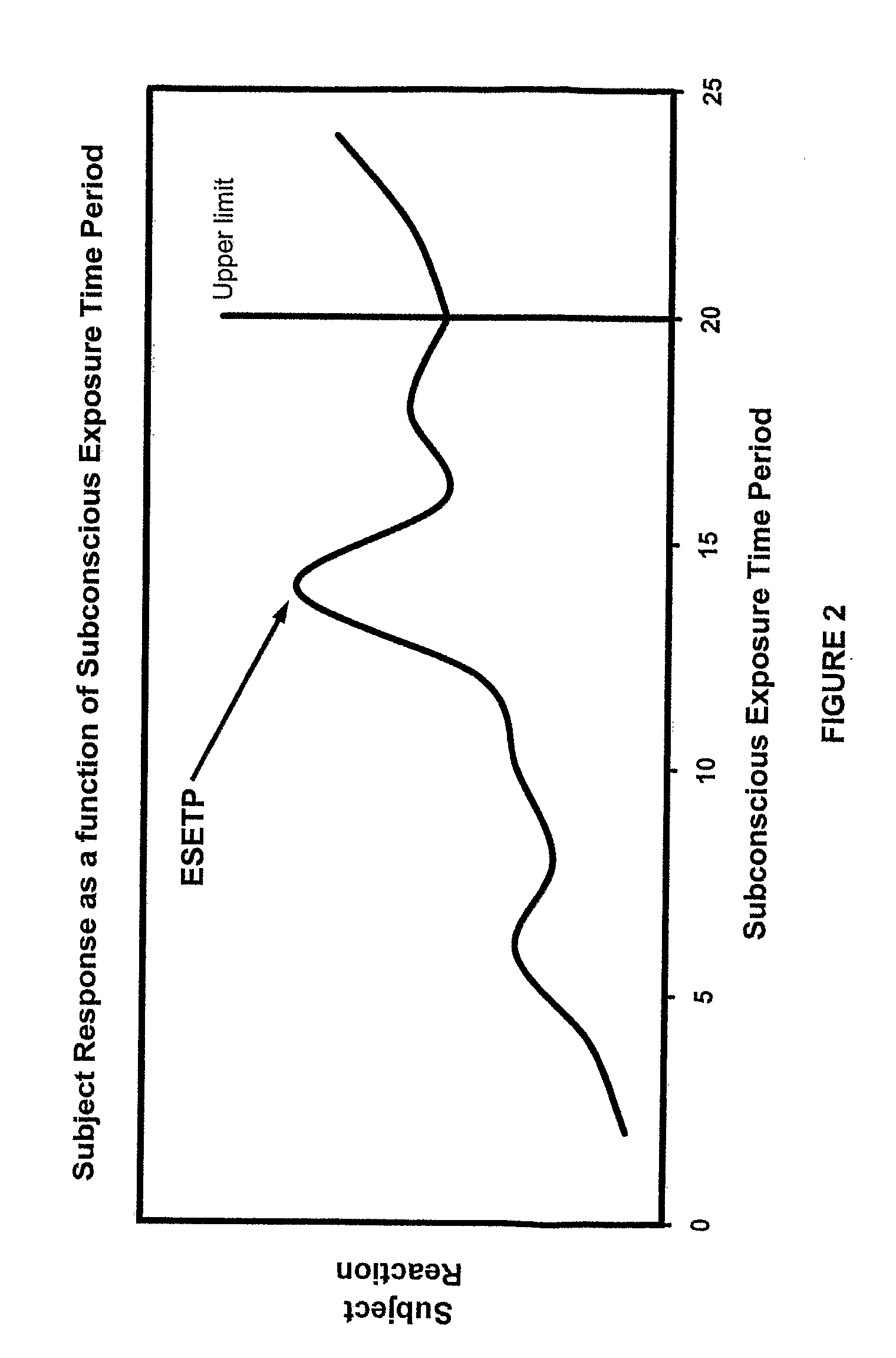Psychological Testing or Teaching a Subject Using Subconscious Image Exposure
a technology of subconscious image and subject, applied in the field of subconscious teaching, can solve the problems of large cost to organizations resulting from lack of these psychological qualities, remains complex, expensive and unreliable, poor implementation of assessing and monitoring, etc., and achieves the effect of increasing the quantity of information obtained, increasing the reliability of results, and increasing the quantity of characteristics obtained
- Summary
- Abstract
- Description
- Claims
- Application Information
AI Technical Summary
Benefits of technology
Problems solved by technology
Method used
Image
Examples
Embodiment Construction
[0043]FIG. 1 shows a block diagram of an example of the invention. A controller / response analyzer 10 is used to manage the test. It is possible to use a computer as a controller / analyzer. A semantic database (SDB) 15 contains stimuli in the form of both words and graphic images. Words come from generally accepted, slang, professional and other dictionaries of any language. From this SDB 15, individually adapted sub-databases, called semantic topics, may be built according to specific information about the subject. Each semantic topic is tested using a set of synonyms of the stimuli. The synonyms consist of words and images that are close and semantically connected among themselves. In the SDB 15, the stimuli are distributed into four functional groups:[0044]Group A: A group of control testing stimuli. The stimuli of this group do not bear any semantic load (for example: it can be rows of numbers, a set of consonants or maskers).[0045]Group B: A group of test stimuli. This group cont...
PUM
 Login to View More
Login to View More Abstract
Description
Claims
Application Information
 Login to View More
Login to View More - R&D
- Intellectual Property
- Life Sciences
- Materials
- Tech Scout
- Unparalleled Data Quality
- Higher Quality Content
- 60% Fewer Hallucinations
Browse by: Latest US Patents, China's latest patents, Technical Efficacy Thesaurus, Application Domain, Technology Topic, Popular Technical Reports.
© 2025 PatSnap. All rights reserved.Legal|Privacy policy|Modern Slavery Act Transparency Statement|Sitemap|About US| Contact US: help@patsnap.com



